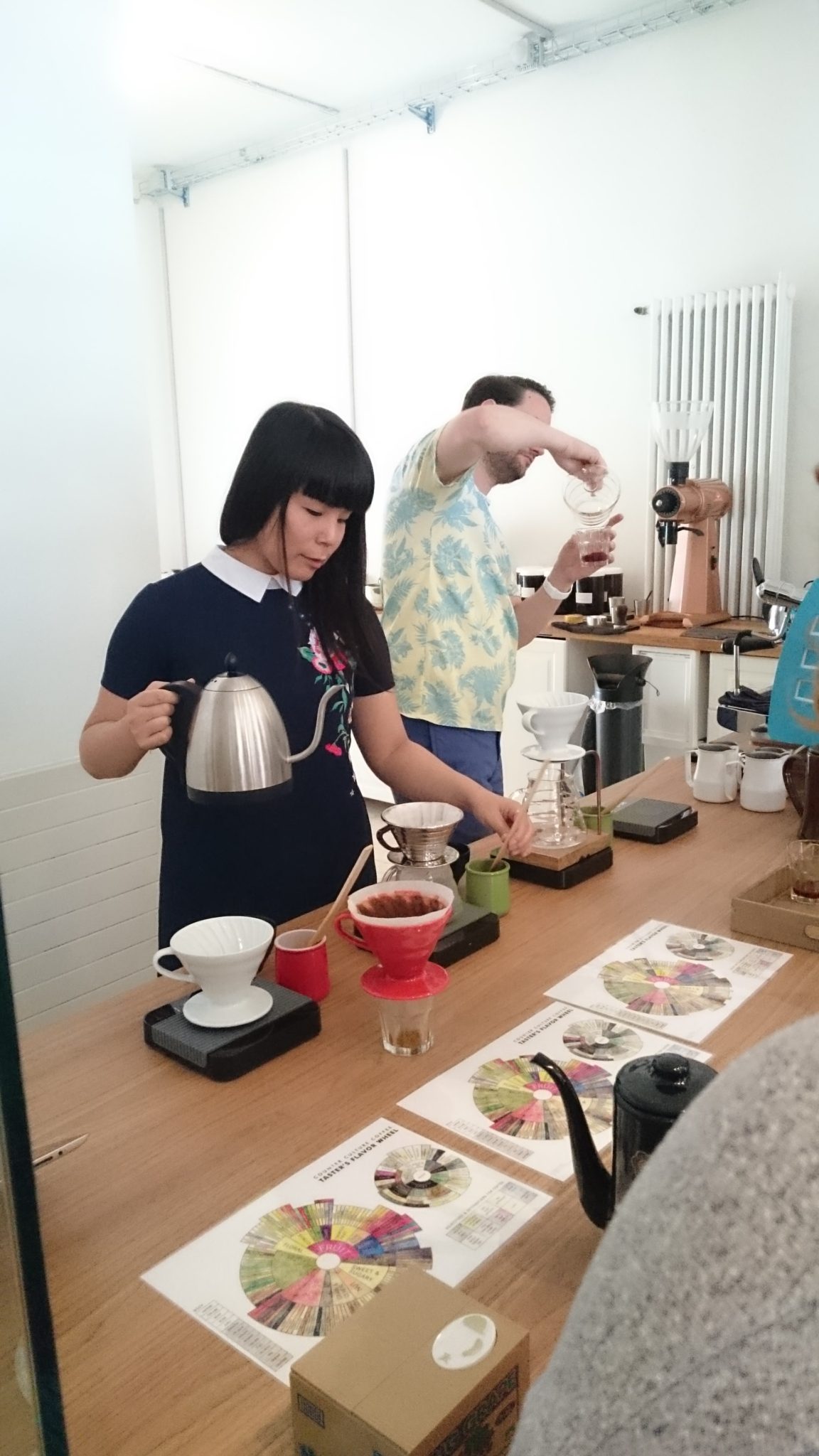
The wonderful Emi and Mathieu held another session at MAME on Sunday 16 July, although it wasn’t the same kind of tasting as they had been doing for the last few months! This time they took the exact same coffee… and filtered it seven different ways!
They chose a “crazy” Kenyan coffee, Coffee Collective’s Kieni, as the intense flavour would produce greater differences between the different brew methods, while the differences would be less noticeable in a “classic” or chocolately coffee. They adjusted the grind size and brewing time for each method through experimentation, aiming for a similar extraction with each, although none came out quite the same.
The seven methods were:
- French press
- Chemex
- V60
- Kalita
- Aeropress
- Woodneck
- Bialetti
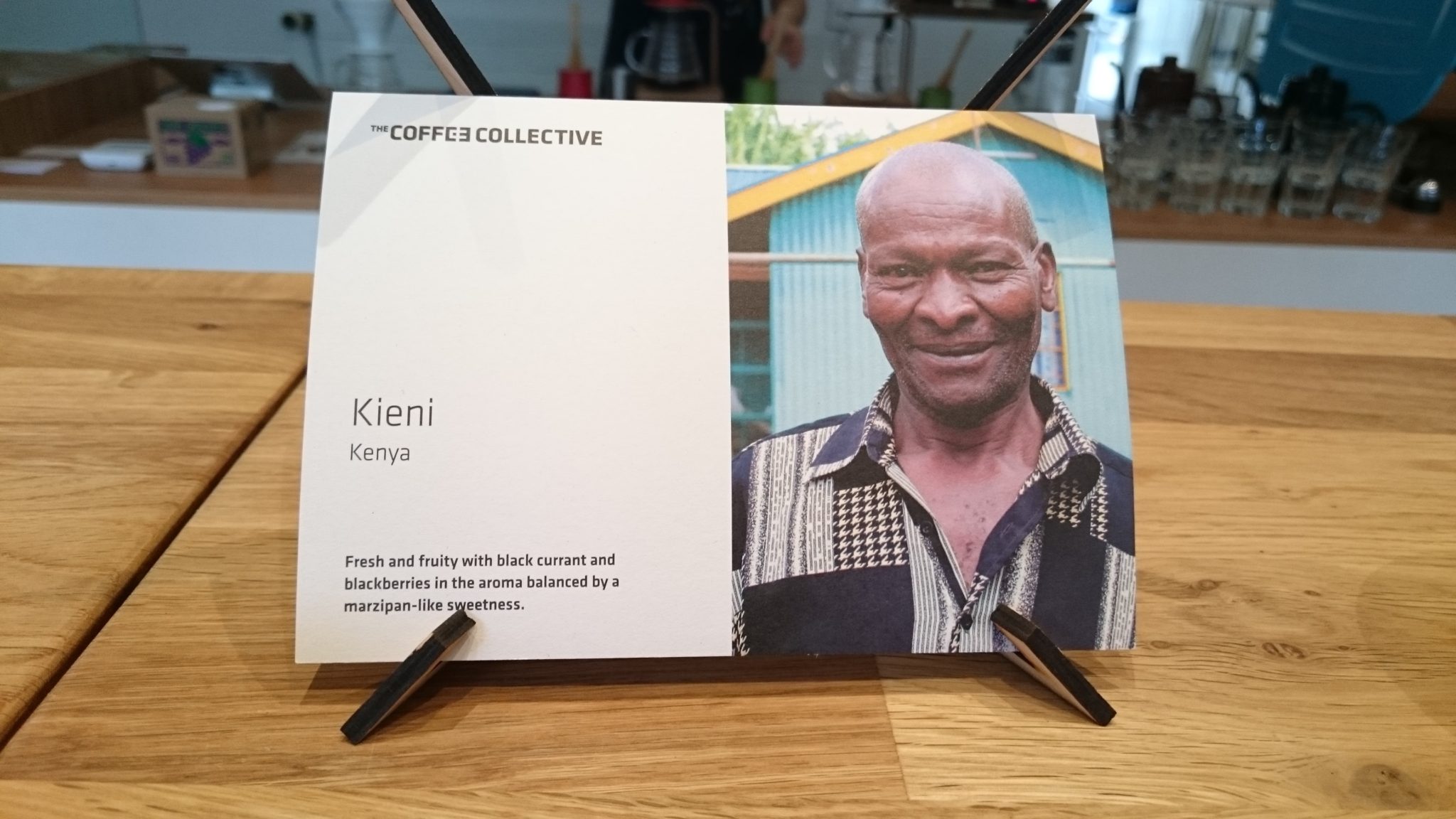
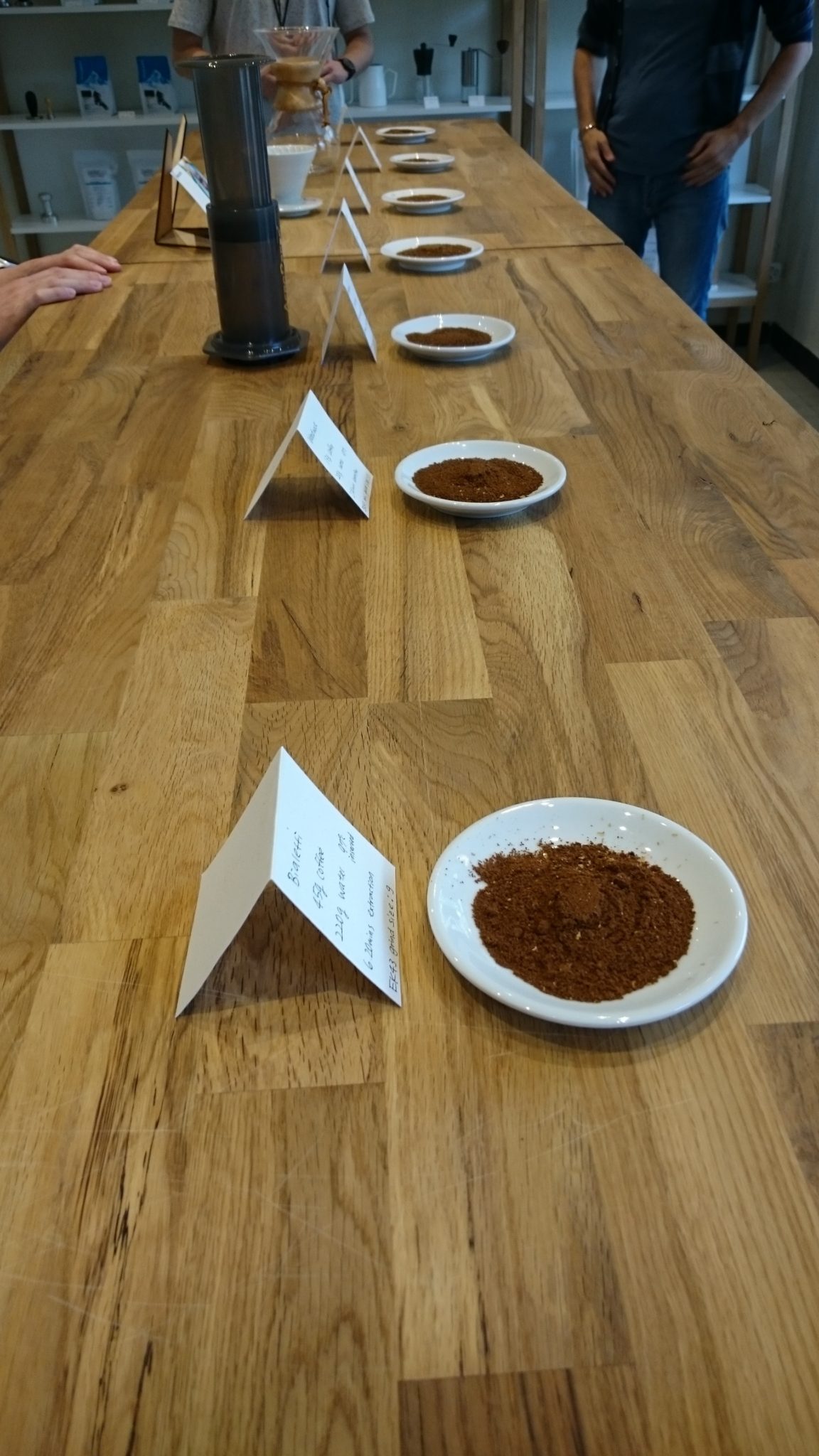
There were more people there than expected – Mathieu and Emi announce the sessions on Meetup, where you have to “sign up” to the event to come, but also on Facebook where there’s less RSVP and they don’t know how many will show. The different brewing methods also make different quantities, from a respectable few cups from the French press, V60, Chemex and Kalita to one coffee with the Aeropress and very little with the woodneck and Bialetti. So the different grinds of coffee with details of the amount of coffee, water and brewing time were lined up on the table in order of grind size, but the tasting was out of order as Emi and Mathieu had to do several runs for some methods.
The French press needed the largest grind size as it uses its metal mesh filter to catch the ground coffee. The coffee steeps in the hot water, and the large grind size meant that this method took the longest to extract out of all seven. Mathieu mentioned that it is used on coffee farms for quick assessment of coffees, but was not seen as a sophisticated method. It always leaves some sediment, so the coffee is never clean, and so it’s not used in competition.
Pros
- Practical, can make lots of coffee at once
- Lots of body
Cons
- Coarse grind makes it hard to extract some flavours
- Easy to leave the coffee to brew for too long
Tasting
- Visual: murky with visible particulates
- Aroma: Tomato!! I’d heard about the tomato in Kenyan coffees, and thought I caught a hint of a few times, but this was outright tomato.
- Taste: Tomato, murky, savoury, lots of umami. Acidic, but mellowed by the strong body
The Plan in Cardiff serve their single-origin coffees brewed with French press, but I really didn’t feel like that did the coffees justice. The body is great, but there’s a lot of sediment (frustrating when you’d otherwise drink every last drop!) and I don’t know if it brings out the flavours as well.
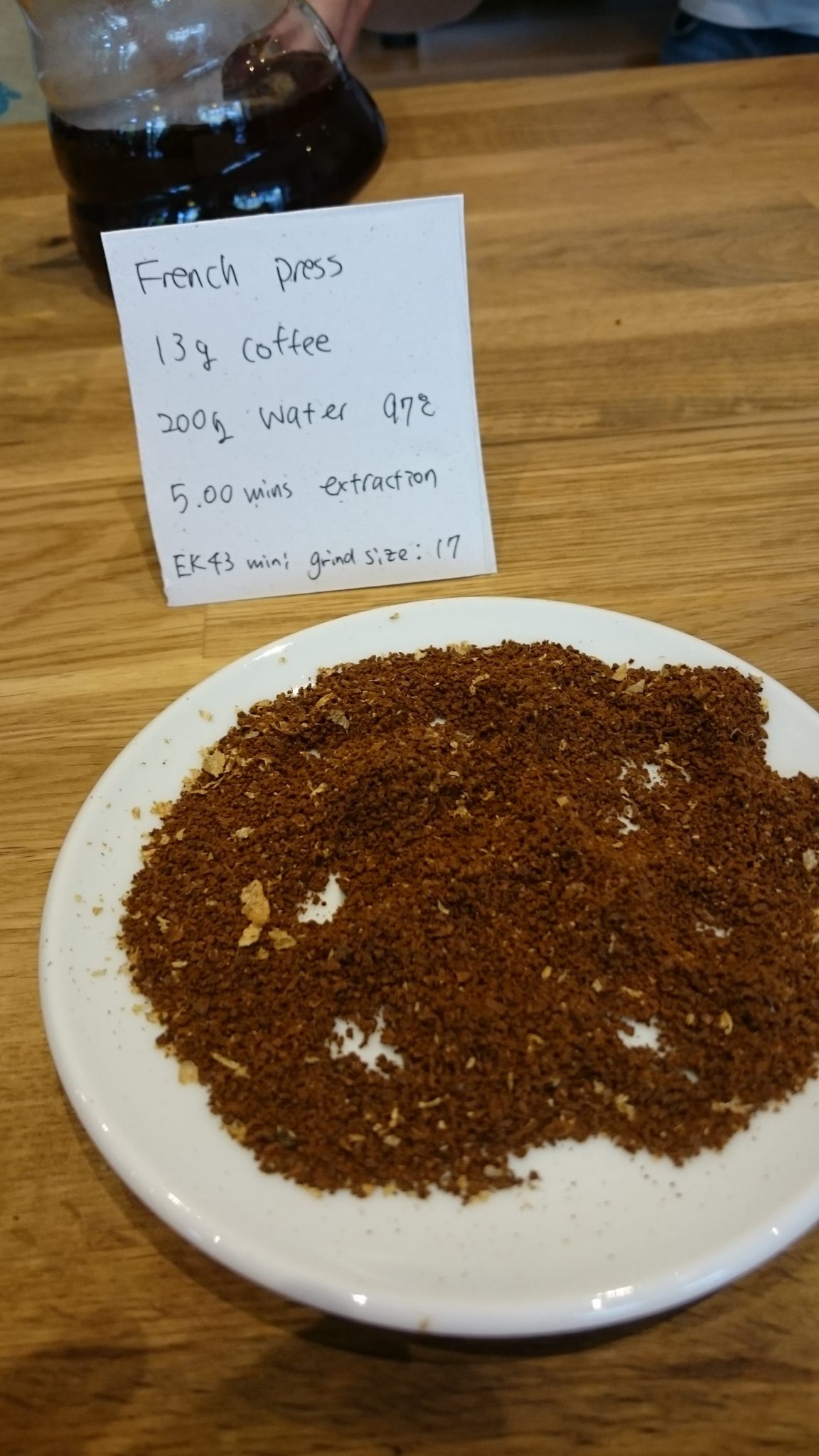
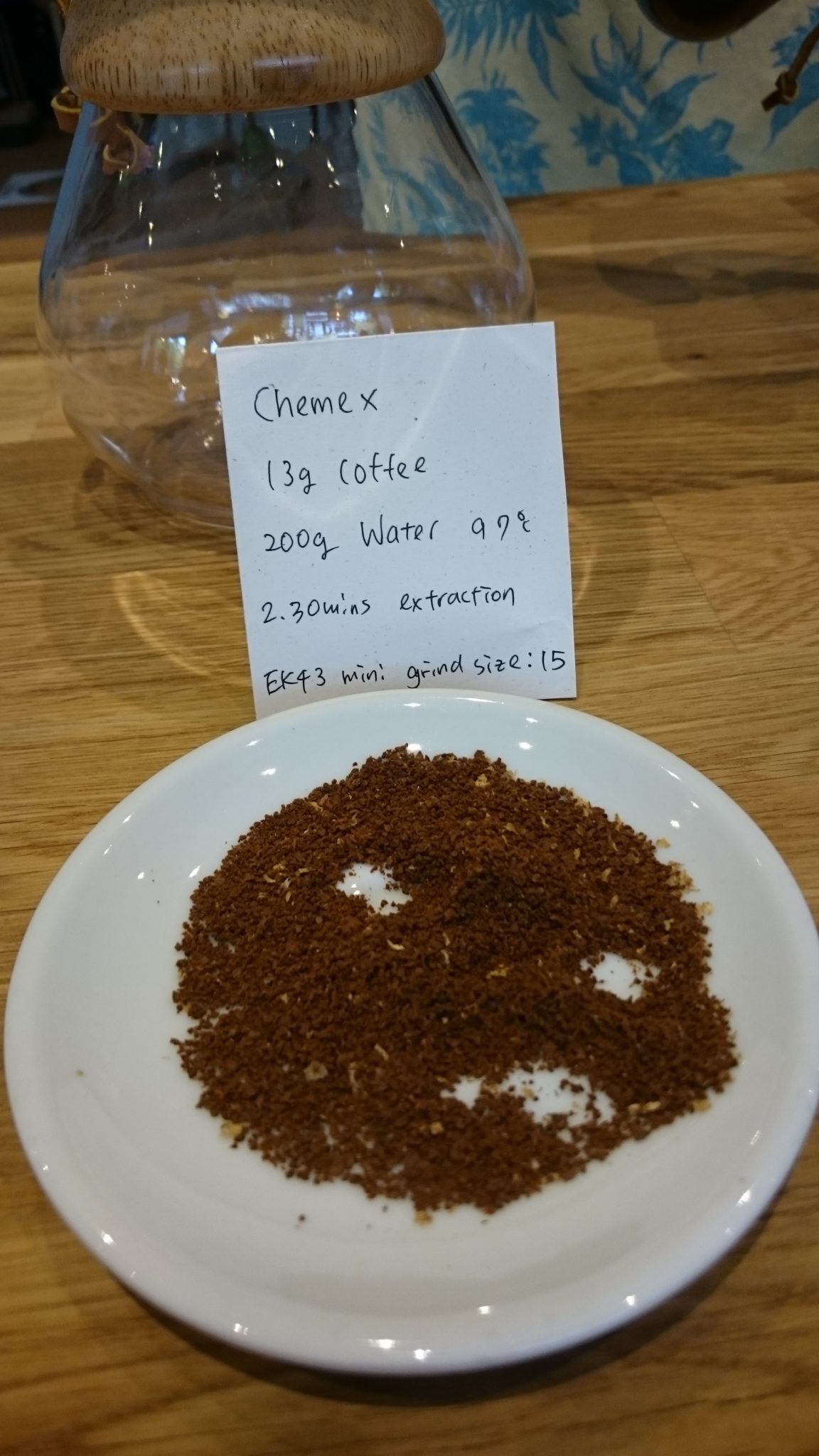
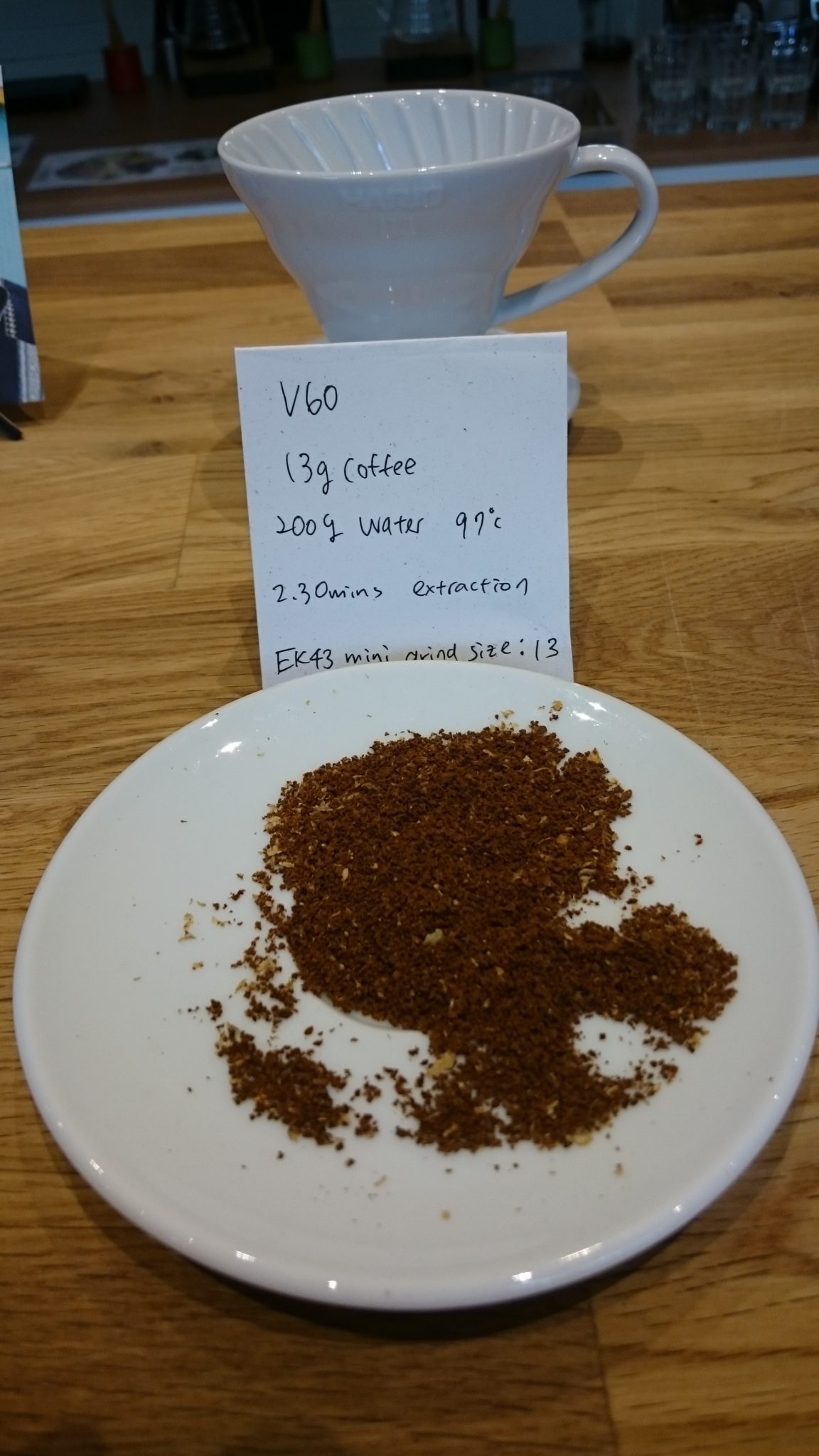
Next up was Chemex, which I had heard of before but didn’t know that much about. They come in a range of sizes, so can make lots of coffee when needed or just enough for one or two. Aside from the rather beautiful shape of the combined filter holder/carafe, the paper filters are also not standard ones. Mathieu said that they allowed coffee oils to pass through, but the Chemex site says the filter holds on to “unwanted” fats and oils. In any case, the coffee produced has less body than a French press but more than a V60, which was next in line.
Pros
- Available in several sizes
- Filter optimised for coffee brewing without bitterness
Cons
- None mentioned, although if you don’t have a reliable source of the proprietary filters that could be an issue.
Tasting
- Visual: Clear, dark amber
- Aroma: Less pronounced than French press but still tomato. Lighter, slightly woody/spicy.
- Taste: Tomato, savoury, umami. Better range of flavour than French press.
After that was the system used in MAME and so many other coffee shops – Hario’s V60. Mathieu mentioned that this system was the one used in competitions because of the clarity and sweetness of the coffee it produces. He was expecting the Kieni to come out sweet and acidic, with notes of blackcurrant, cranberry and blueberry.
He stressed that the grind used was not the finest (it was third coarsest of the seven methods) but still finer than French press or Chemex.
Pros
- Available in different sizes
- Clear, sweet flavour used in competition
Cons
- None mentioned, although it also seems to have proprietary filters.
Tasting
- Visual: Clear, amber, lighter than Chemex
- Aroma: More pronounced but less fruity
- Taste: More acidic, more bitterness, less fruity and less savoury. Cleaner and lighter.
The next system, with a slighter finer grind size, was Kalita. Popular in Scandinavia and specifically recommended by Coffee Collective, it was different from the Chemex and V60 in that the base of the filter was flat, allowing some immersion. This gave it some of the qualities of French press mixed with those of the Chemex or V60. Emi commented that it tended to reduce acidity and astringency and increase sweetness.
Pros
- Recommended by coffee roasters
- Combines aspects of immersion and fast filtering
Cons
- None mentioned, although again the filters seem to be proprietary.
Tasting
- Visual: Clear, dark amber.
- Aroma: Tomato, fruity.
- Taste: seemed muted at first, then intense, some tomato but not too much. Not too acidic or sweet, everything came out very rounded. However, compared to the Chemex and V60 it felt like the spectrum of flavour had been cut off somewhere and some of the earlier elements were missing.
I missed Mathieu’s commentary on the Aeropress, but it has become very well known. Funnily enough, I’ve bought two as gifts (for my father and my other half’s father) and they’re what I use for coffee when I’m away from home. I used an Aeropress for ages before I got interested in coffee (and wrecked one, possibly by mixing ground spices into the coffee) so it was revealing to see it compared with the other filter methods.
Pros
- Simple and portable
- Very easy to clean!
Cons
- Brews small quantity of coffee
- Proprietary filters (reusable metal filters available from third parties)
Tasting
- Visual: Slightly murky, some particulates. Mid/dark amber.
- Aroma: Sweeter, more delicate. Some tomato but not so intense.
- Taste: Extremely savoury, acidic, soupy. Great body, murky, lingering.
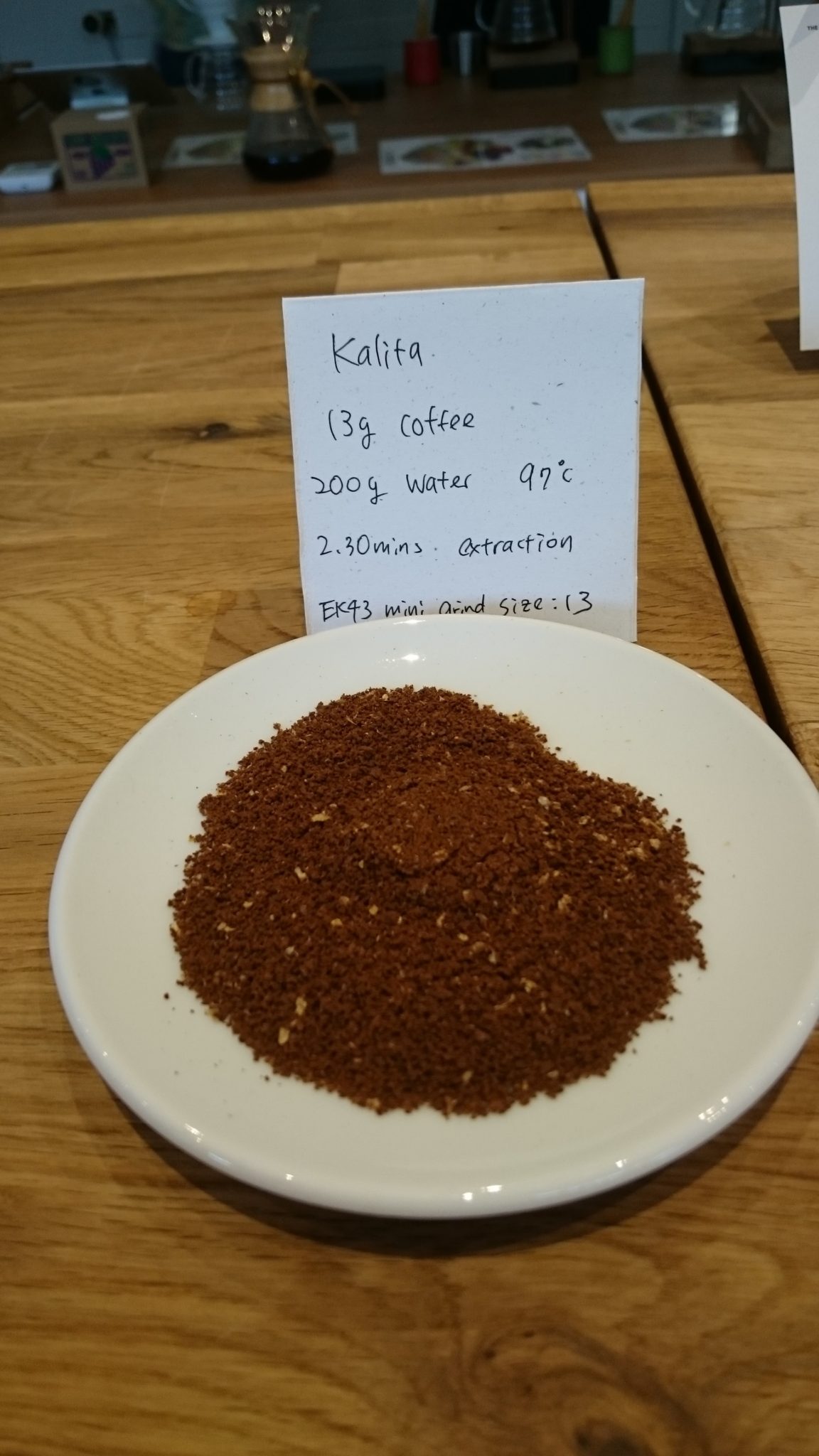
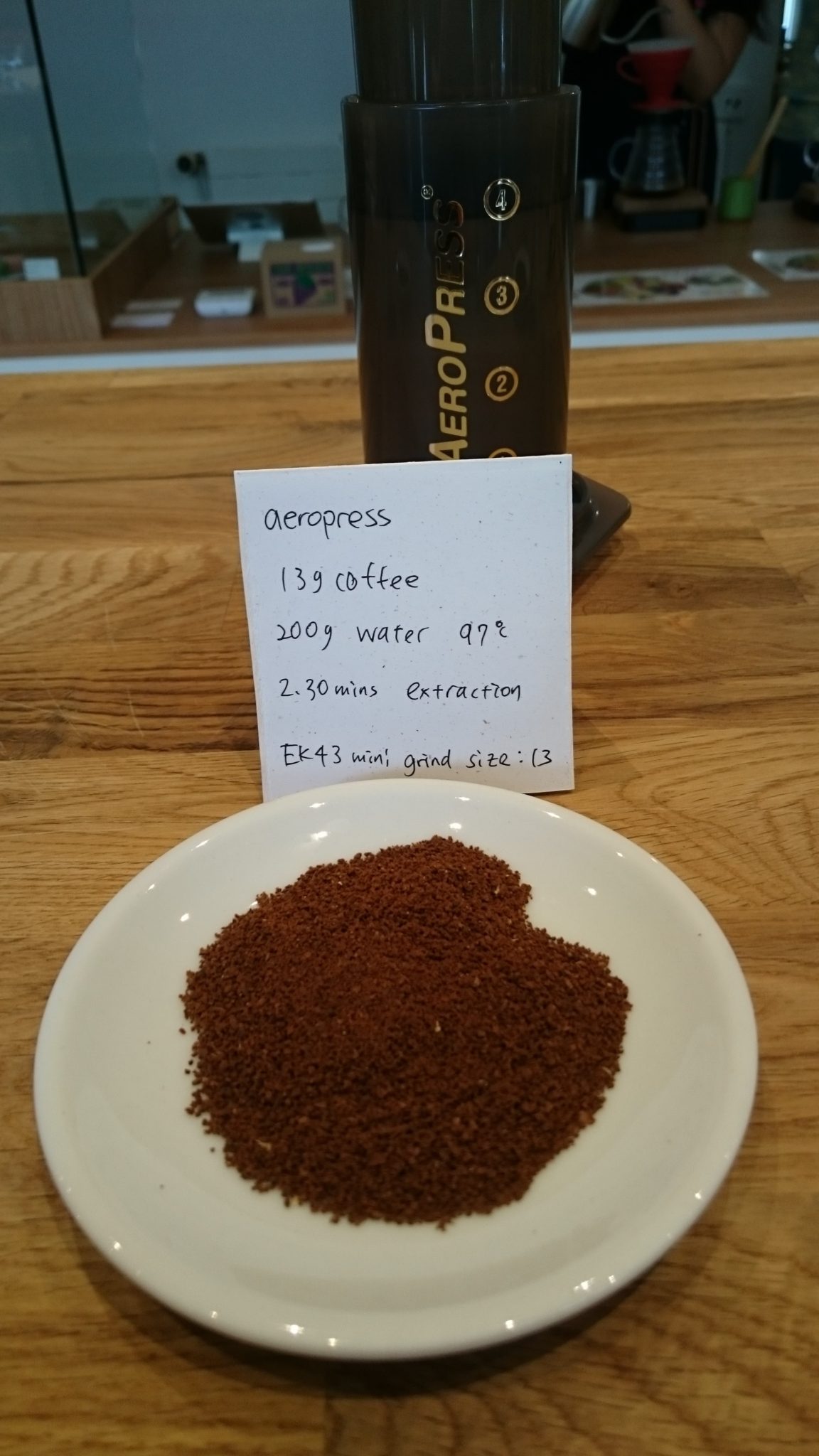
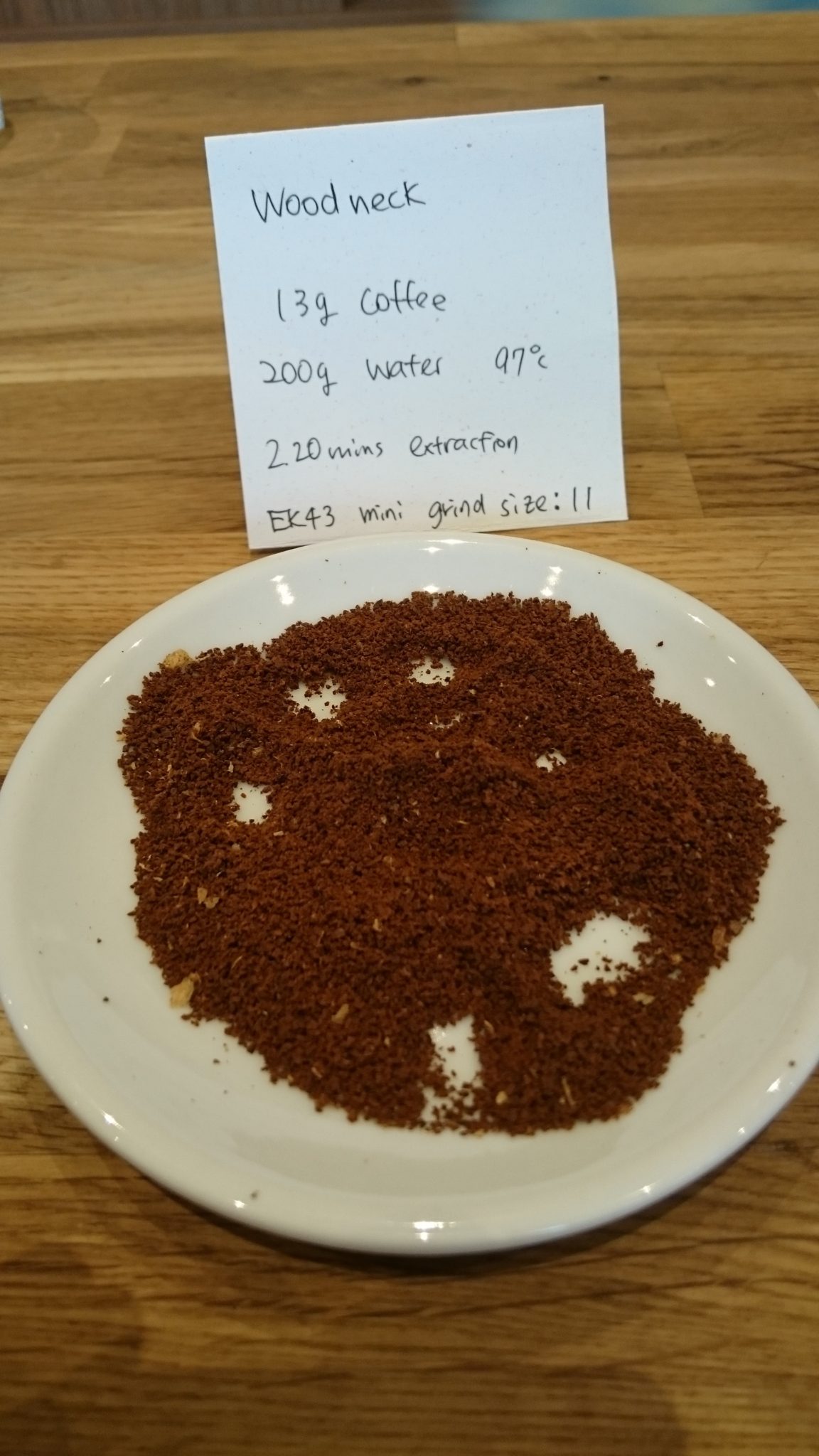
Finally we made it to the very fine grinds, including the woodneck which I’d never seen before – another Hario product. It seems to come in two sizes, but Emi and Mathieu must have only had the smaller one! So it was a trick to serve almost 30 people. One guest from Costa Rica said they used it there, and apparently it’s very popular in Japan but not in Europe. The big difference from the previous systems was filter, a cloth bag attached to a handle that has to be kept in water when not in use. Mathieu commented that it can take some elements out of darker roasts.
Pros
- Looks lovely
- Comes in two sizes
Cons
- Filter has to be kept in water when not in use (and in the fridge according to Hario)
Tasting
- Visual: Clear, dark amber.
- Aroma: Warm, indistinct.
- Taste: Incredibly savoury, really brings out the tomato. Mellow, not much sweetness or acidity, but didn’t have the “something missing” feeling that I got from the Kalita, more rounded.
I couldn’t fathom what a Bialetti was until I saw it – I had always called it a Turkish coffee maker. I suppose it is technically a filter coffee maker! Mathieu described the coffee as somewhere between filter and espresso.
Pros
- Simple, can be used on cooker/stove top
- Available in a range of sizes
- Reusable metal filter
Cons
- Hard to clean
Tasting
- Visual: Very murky, almost more than the French press.
- Taste: Like tomato paste, intensely savoury. Some sweetness, soupy, almost fishy.
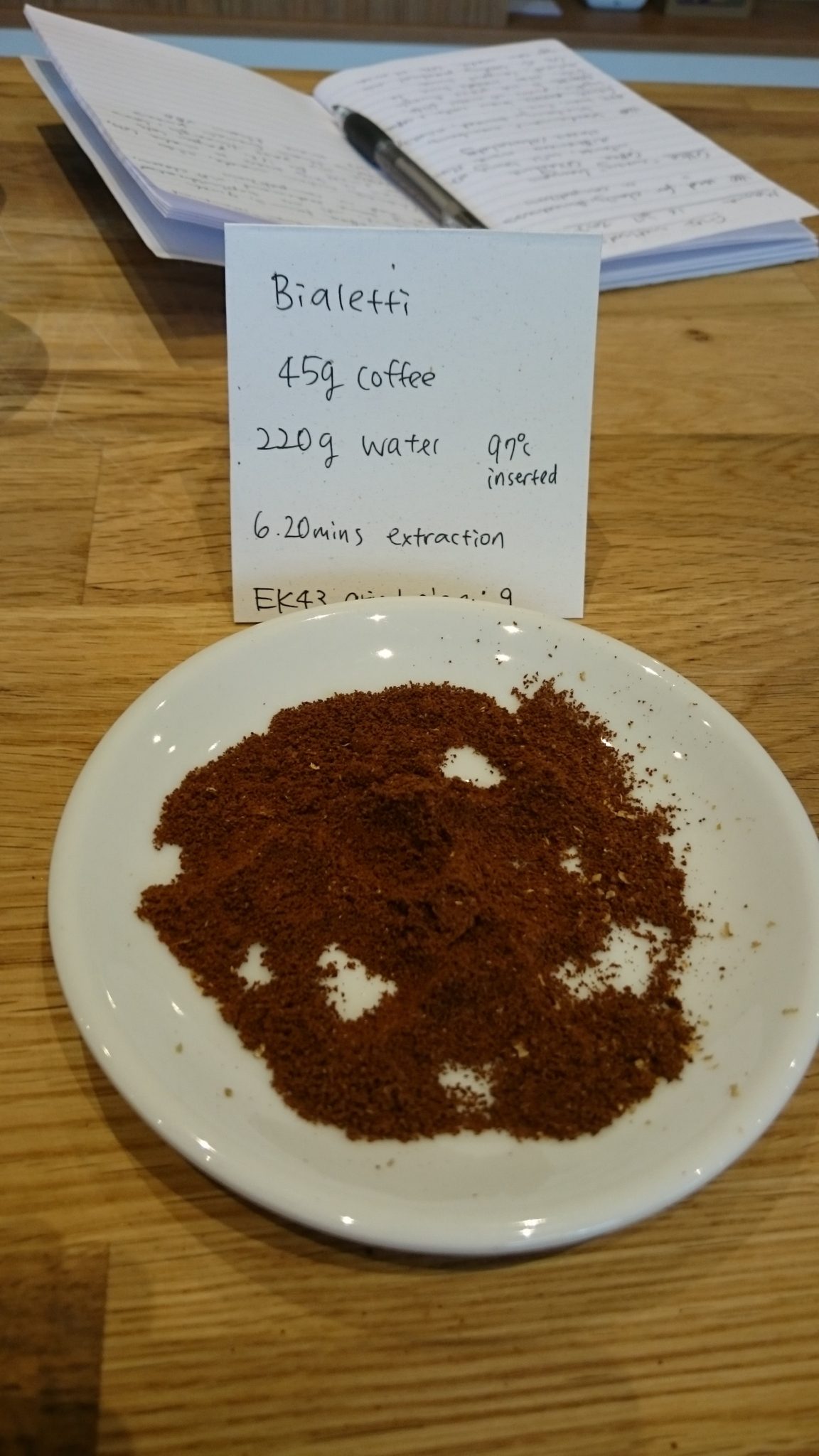
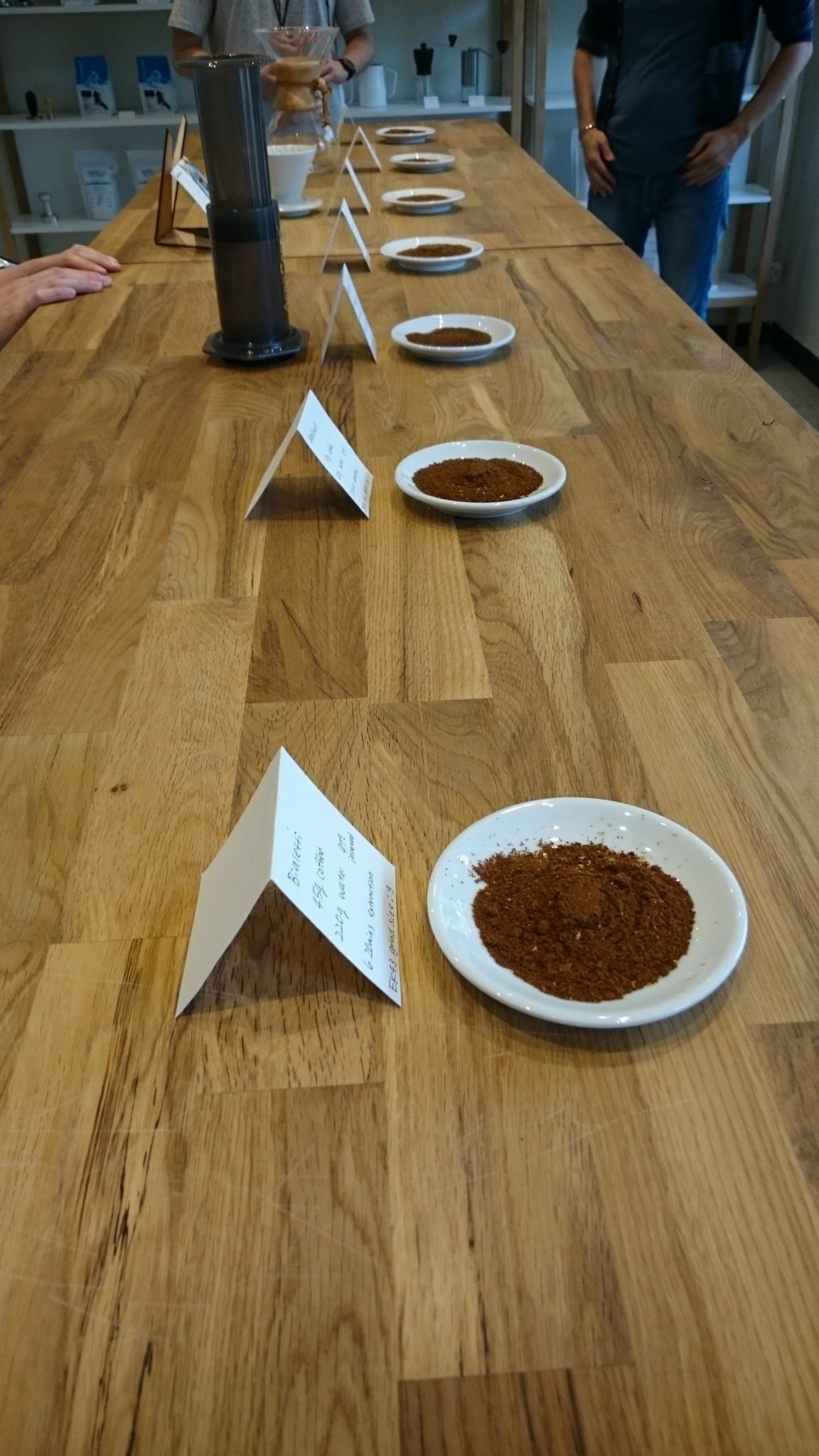
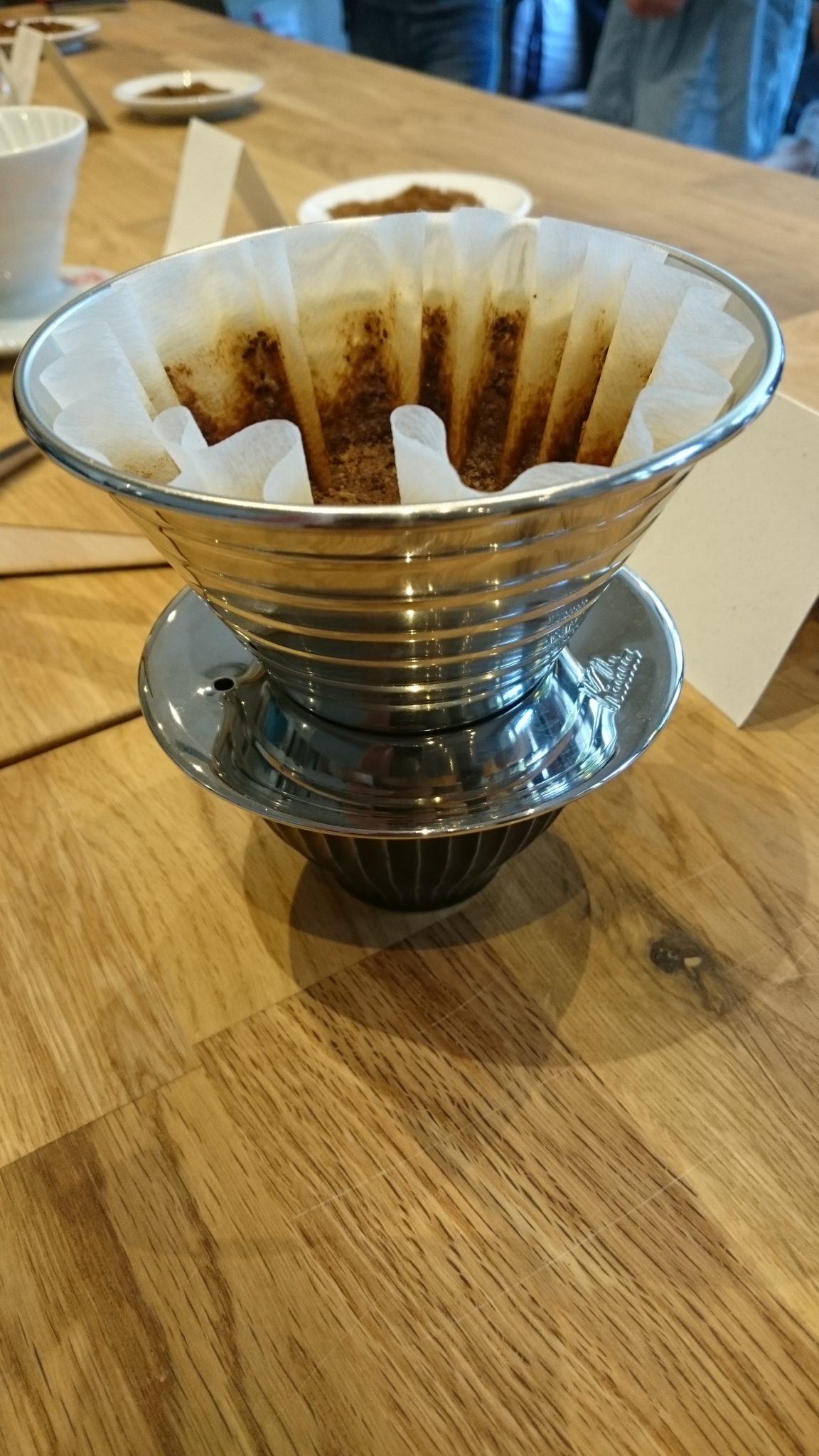
After everyone had tasted all seven brews, it was time for questions. Someone asked about the difference between the Kalita and V60 filter papers, and Mathieu answered that although the weight of the paper is similar, the shape is what makes the difference. The Kalita has a flat base, whereas the V60 is a sharp cone. He commented that it was easier to keep the grounds from sticking on the V60 than on the Kalita’s “wave” filters with their deep indents.
The other news that Emi and Mathieu had to share was that they’ve finally got the licence they were waiting for and plan to become a full cafe serving food! Really looking forward to seeing how the place develops.